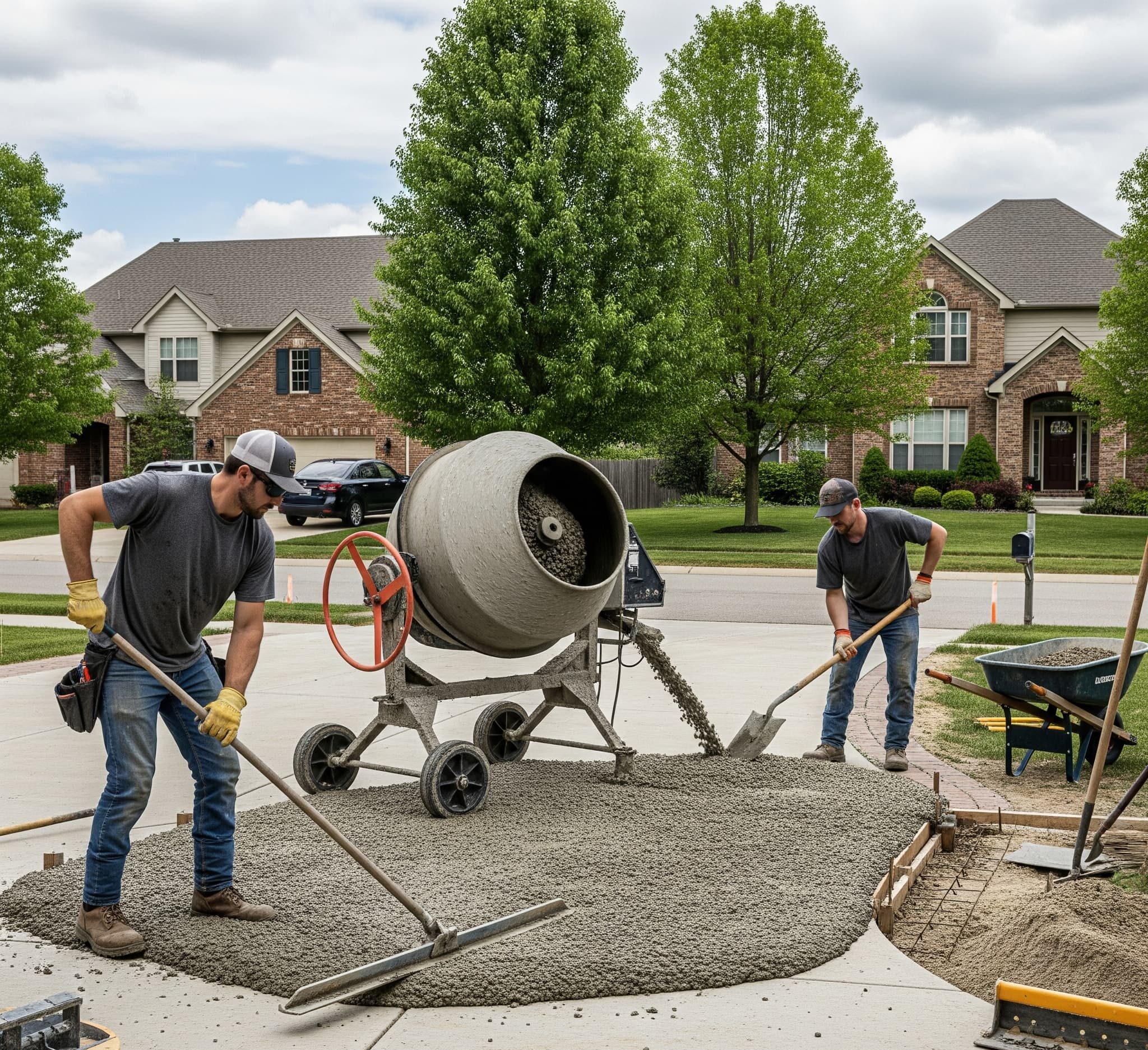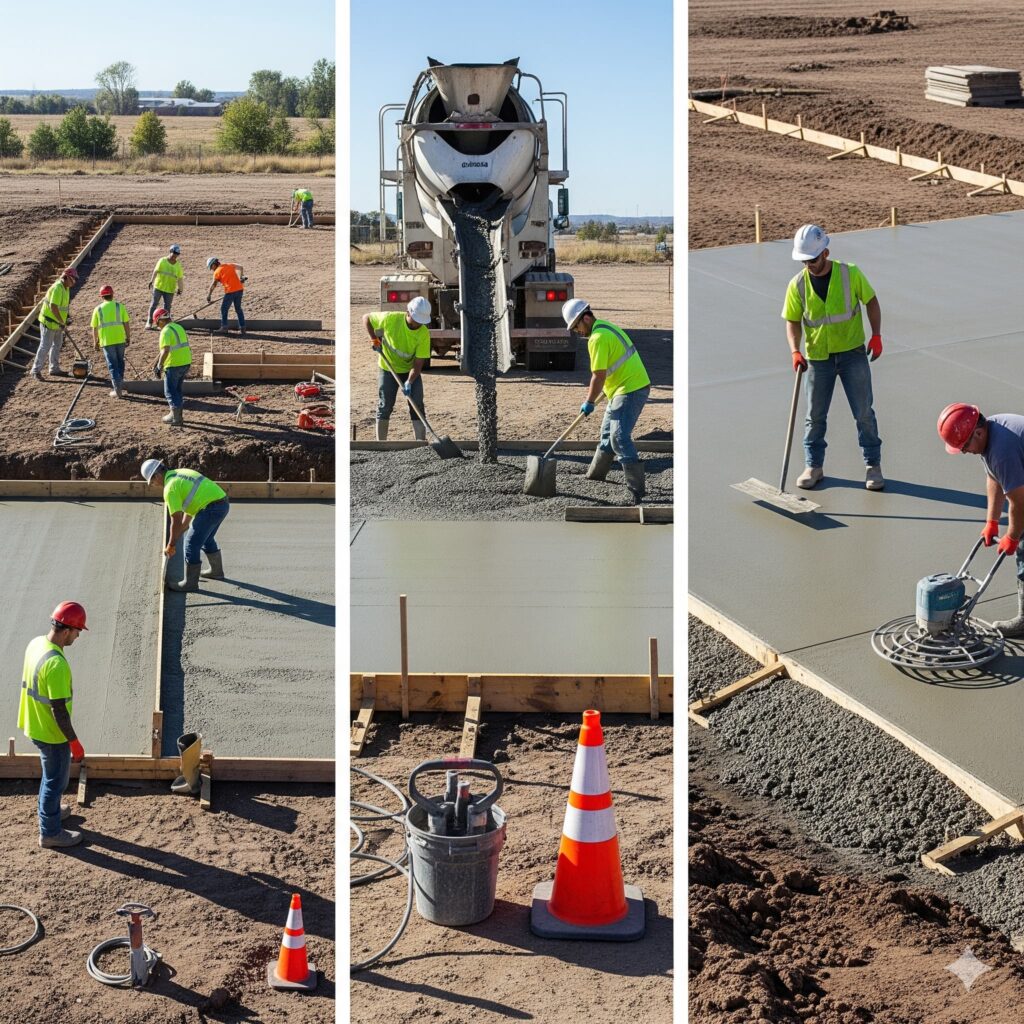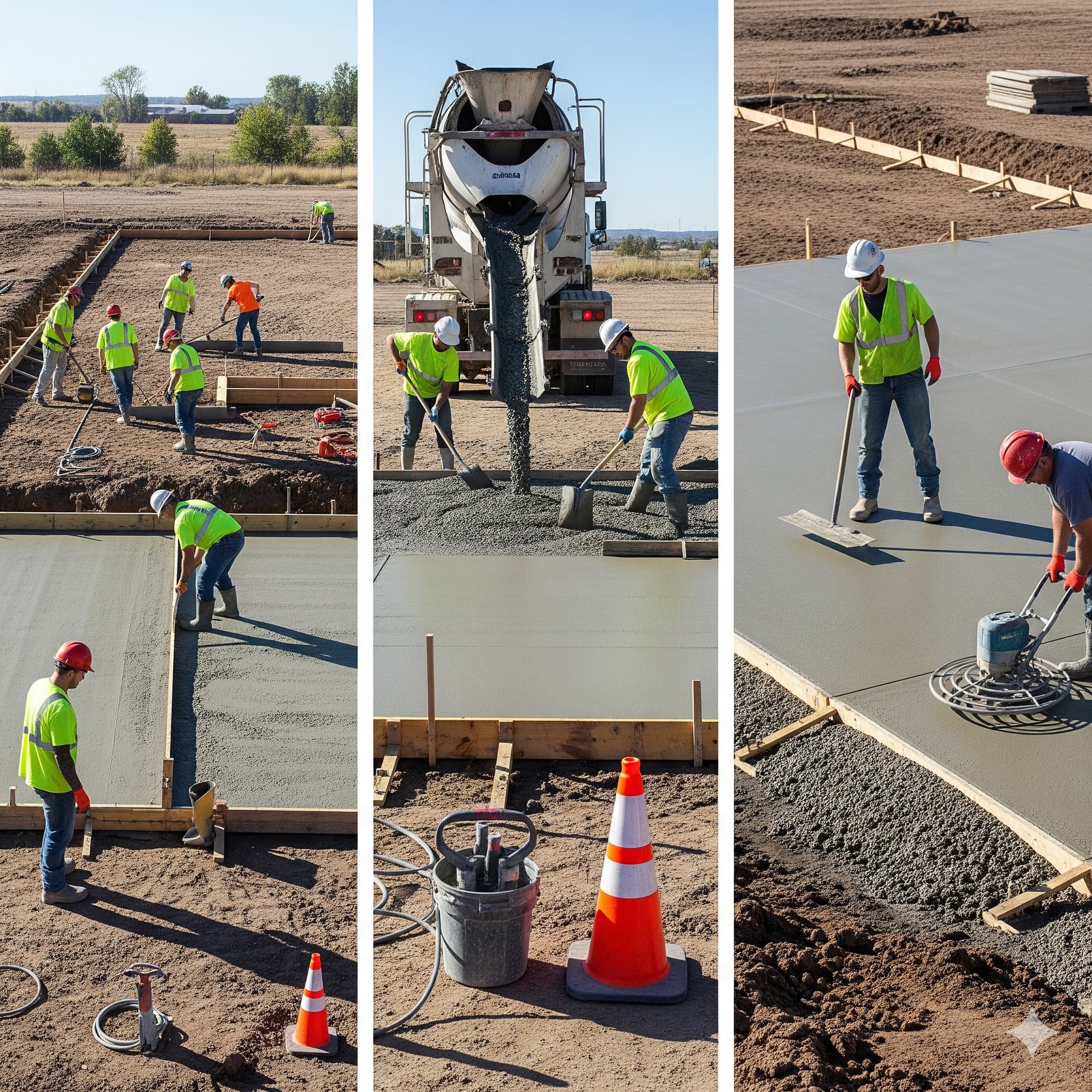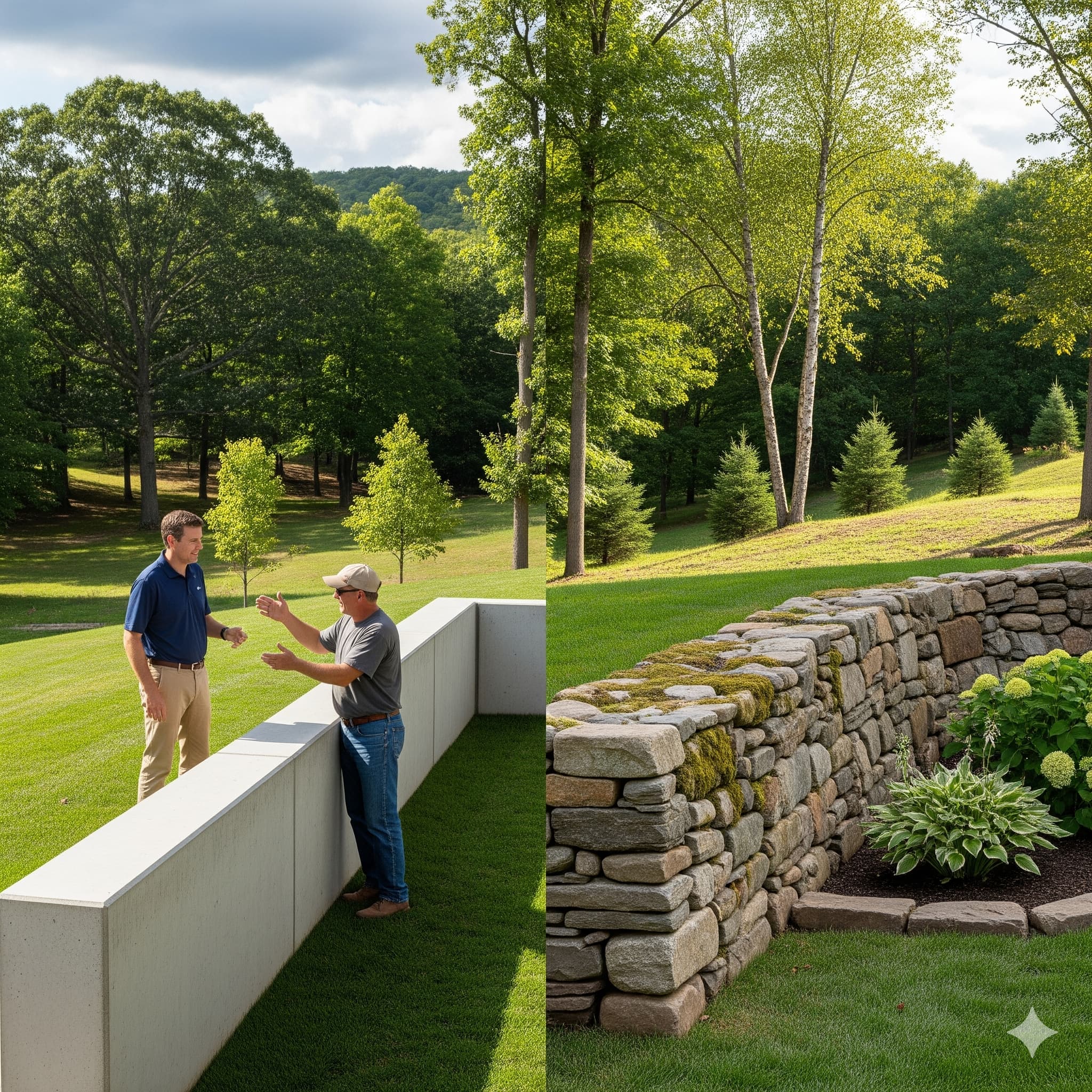
Concrete Flatwork Installation Timeline for Local Contractors
Concrete Flatwork
Understanding precise installation timelines for concrete flatwork projects enables contractors to provide accurate scheduling, manage client expectations, and optimize resource allocation throughout Connecticut’s diverse communities. From residential driveways in Fair Haven Heights to commercial sidewalks along the Quinnipiac River waterfront, successful concrete flatwork delivery requires careful coordination of weather conditions, material delivery, and curing requirements specific to each project type.

Pre-Installation Planning Phase (1-3 Days)
Effective concrete flatwork projects begin with comprehensive planning that addresses site conditions, permit requirements, and material specifications. This critical phase determines project success and helps prevent costly delays during construction. Properties near the Mill River and Quinnipiac River require additional consideration for drainage and soil stability factors that influence both timeline and installation methods.
Site Assessment and Preparation
Professional site evaluation identifies potential challenges, including soil conditions, drainage requirements, and access limitations that could impact the project timeline. Excavation and grading work typically requires 1-2 days for residential projects and 2-3 days for larger commercial installations. Properties in East Shore neighborhoods may require additional time for utilities location and environmental clearances near waterfront areas.
Material Coordination and Delivery
Concrete mix design, reinforcement materials, and finishing supplies must arrive on schedule to prevent project delays. Ready-mix concrete delivery requires precise timing coordination with placement crews and equipment availability. Advanced scheduling ensures optimal concrete temperature and workability while avoiding extended truck waiting times that increase project costs.
Subgrade Preparation Timeline (1-2 Days)
Proper subgrade preparation forms the foundation for long-lasting concrete flatwork performance. This critical phase involves excavation, compaction, and base course installation that directly impacts final surface quality and structural integrity. Projects in areas like Fair Haven Heights require careful attention to existing utility locations and soil drainage characteristics.
Excavation and Grading Requirements
Mechanical excavation proceeds efficiently with proper equipment selection and skilled operators who understand grade tolerance requirements. Typical residential driveways require a 4-6 inch excavation depth, while commercial flatwork may require 8-12 inches, depending on load requirements. Hand finishing around utilities and landscape features adds precision but requires additional time allocation.
Base Course Installation and Compaction
Crushed stone base course installation provides stable support and drainage beneath concrete flatwork surfaces. Proper compaction using vibratory equipment ensures uniform density and prevents future settling problems. Multiple lift placement and compaction cycles may require additional time, but ensure optimal long-term performance for heavy-duty applications.
Forming and Reinforcement Phase (4-8 Hours)
Professional forming systems create precise boundaries and elevation control essential for quality concrete flatwork installation. Steel reinforcement placement prevents cracking and enhances structural capacity for areas subject to heavy loads or challenging soil conditions. Waterfront properties near the Quinnipiac River often require enhanced reinforcement due to fluctuating groundwater levels.
Form Installation and Alignment
Precision forming using straight lumber or metal edge forms ensures proper concrete thickness and clean edge lines. Grade stakes and string lines provide elevation control throughout the placement area. Complex curved installations or decorative borders require additional setup time but create distinctive aesthetic results that enhance property value.
Steel Reinforcement Placement
Welded wire mesh or rebar installation provides tensile strength that prevents cracking from thermal expansion and soil movement. Proper placement within the concrete cross-section maximizes reinforcement effectiveness. The chair supports maintain correct reinforcement elevation during concrete placement while avoiding displacement during finishing operations.
Concrete Placement Timeline (2-6 Hours)
Efficient concrete placement requires coordinated teamwork between delivery trucks, placement crews, and finishing specialists working within concrete workability timeframes. Project size, complexity, and weather conditions influence placement duration and crew requirements. Large commercial projects may require multiple concrete deliveries and extended placement periods.
Delivery Coordination and Truck Management
Ready-mix concrete delivery scheduling prevents delays while ensuring optimal concrete consistency throughout placement. Truck positioning and chute management facilitate efficient discharge without damaging existing landscaping or structures. Sequential delivery timing maintains continuous placement for large areas while preventing cold joints between loads.
Placement Techniques and Quality Control
Professional concrete placement using screeds, rakes, and vibration equipment ensures uniform distribution and proper consolidation. Strike-off operations level concrete to precise elevations while eliminating air voids and achieving the specified thickness. Quality control measures during placement prevent future problems and ensure compliance with project specifications.
Finishing Operations Timeline (1-4 Hours)
Surface finishing transforms placed concrete into functional, attractive flatwork surfaces that meet aesthetic and performance requirements. Timing becomes critical as concrete workability changes during the curing process. Different finish types require specific timing and techniques to achieve optimal results and surface durability.
Initial Finishing and Float Work
Bull float operations smooth surface irregularities and bring cream to the surface for subsequent finishing steps. Proper timing prevents overworking that could weaken surface strength or create finishing problems. Hand floating around edges and detail areas ensures a consistent appearance throughout the entire project area.
Final Surface Texturing and Edging
Broom finishing, stamping, or other decorative treatments must occur within specific timeframes as concrete stiffens. Edge tool applications create clean, professional appearances while preventing edge chipping or spalling. Control joint sawcutting timing affects joint quality and long-term crack control effectiveness.
Curing and Protection Phase (1-28 Days)
Proper curing ensures concrete achieves the specified strength and durability characteristics essential for long-term performance. Protection measures prevent damage from weather, traffic, or construction activities during vulnerable early curing periods. Connecticut’s variable climate requires adaptive curing strategies for optimal results.
Initial Curing Requirements (24-48 Hours)
Critical early curing prevents surface drying and ensures proper hydration for strength development. Plastic sheeting, curing compounds, or water application maintain moisture while preventing freeze damage in cold weather. Traffic restrictions protect surfaces during initial hardening when damage susceptibility remains high.
Strength Development Timeline
Concrete typically achieves sufficient strength for light foot traffic within 24-48 hours under normal conditions. Vehicle traffic requires a 5-7-day minimum curing time, while full design strength develops over 28 days. Cold weather extends curing timeframes, while hot weather may accelerate early strength gain but require enhanced moisture retention.
Weather Impact Considerations
Connecticut’s seasonal weather variations significantly impact concrete flatwork installation timelines and require adaptive scheduling strategies. Temperature extremes, precipitation, and humidity levels affect both placement procedures and curing requirements throughout the construction process.
Cold Weather Adaptations
Winter concrete placement requires heated materials, insulated forms, and extended protection periods that can double normal installation timelines. Accelerated curing techniques and specialized admixtures enable year-round construction but require additional planning and cost considerations. Indoor warming or temporary enclosures may be necessary for critical projects.
Hot Weather Precautions
Summer heat accelerates concrete setting times and requires modified placement procedures, including early morning scheduling, evaporation retardants, and enhanced curing measures. Rapid moisture loss can cause plastic shrinkage cracking, and surface defects that compromise long-term performance. Shade structures and wind protection help control environmental conditions during critical finishing periods.
Project Size and Complexity Factors
Installation timelines vary significantly based on project scope, design complexity, and site accessibility challenges. Simple residential driveways may be completed within 2-3 days, while large commercial installations could require several weeks, including preparation, placement, and curing phases.
Residential Project Timelines
Typical residential concrete flatwork, including driveways, sidewalks, and patios completed within 3-5 days from excavation through initial curing. Simple rectangular configurations proceed faster than curved or decorative installations, requiring additional forming and finishing time. Access limitations in established neighborhoods may extend timelines due to equipment restrictions.
Commercial Installation Schedules
Large-scale commercial flatwork projects require extended timelines accommodating greater complexity, regulatory requirements, and coordination with other construction activities. Phased construction approaches enable business continuity while managing traffic flow and utility access throughout installation periods. Quality control testing and inspection requirements add time but ensure compliance with performance specifications.
Quality Assurance and Final Inspection
Professional quality control measures throughout the installation process ensure concrete flatwork meets performance and aesthetic standards while preventing costly remedial work. Systematic inspection procedures verify compliance with specifications and identify any issues requiring attention before project completion. New Haven Concrete Company maintains rigorous quality standards throughout every installation phase, delivering exceptional concrete flatwork results that exceed client expectations while meeting all timeline commitments for projects throughout Connecticut’s diverse communities.



